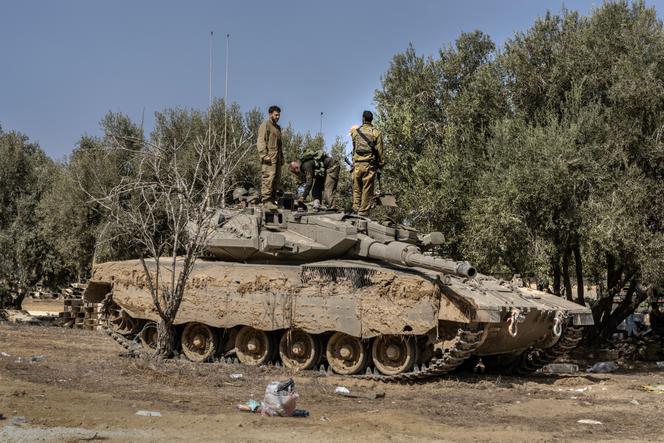


Since the vast military response launched by Israel in the Gaza Strip following the attack by Hamas on Israeli territory on October 7 – with a total of 1,400 victims on the Israeli side and 2,670 on the Palestinian side – the level of resources available to the Israeli army to carry out the major ground offensive announced by the authorities has been closely monitored by military analysts.
The Israeli army's main strength is its air force. With a fleet consisting mainly of American F-16s (nine squadrons, or around 180 aircraft) but also F-35s (two squadrons) – some of the most technologically advanced aircraft on the planet – and its direct geographical proximity to Gaza, Israel has always enjoyed a high degree of military superiority over the Palestinian enclave. In recent years, this has enabled it to carry out a series of punitive operations against Hamas without taking any major risks.
Its aerial resources also include attack helicopters (two squadrons of Apaches) and a fleet of drones, ranging from simple surveillance devices to help guide artillery fire to armed drones combining intelligence and strike capabilities. The Israeli army also has a stock of suicide drones (Harop and Harpy models), also known as "loitering munitions," capable of autonomously tracking a moving target and then swooping down to neutralize it.
"For more than 20 years, Israel's strategy has been to wage war from a distance, mainly through air operations, in order to minimize the risk to its soldiers. But this is not always very effective in a complex urban environment. You can do some damage, but it's never decisive because it's always possible for those being targeted to take refuge in Gaza's many underground tunnels, and that leads above all to civilian casualties," said Colonel Michel Goya, author of several books on the Middle East, including Israël contre le Hezbollah. Chronique d'une défaite annoncée, 12 juillet-14 août 2006 ("Israel vs Hezbollah: Chronicle of a foretold defeat, July 12-August 14, 2006").
This time, Israel seems to have decided to proceed differently, with an operation involving the entry of ground troops into Gaza. It's a risky gamble, given that over the last 15 years, Israel's army has rarely launched ground incursions, apart from lightning-fast strikes on very specific targets.
The three major ground offensives carried out by the Israeli Defense Forces were first in 2006, in response to the kidnapping of soldier Gilad Shalit; then in 2008-2009, for Operation Cast Lead; and in 2014, for Operation Protective Edge. These operations have never succeeded in defeating Hamas, and have led to greater losses on both sides each time: the deaths of five Israelis and 277 Palestinian fighters in 2006; the deaths of 10 Israelis and 700 Palestinians in 2008; and the deaths of 66 Israelis and 2,200 Palestinians (both civilians and fighters) in 2014.
You have 58.69% of this article left to read. The rest is for subscribers only.
